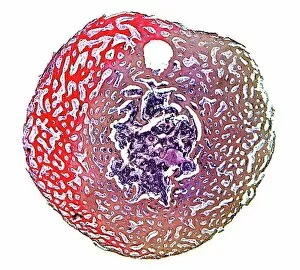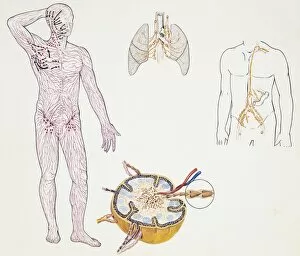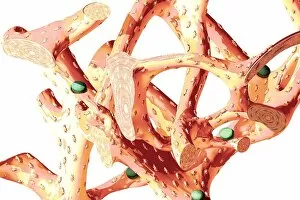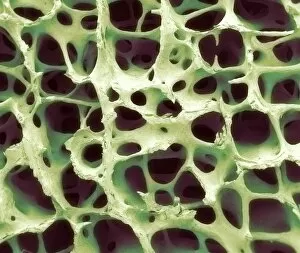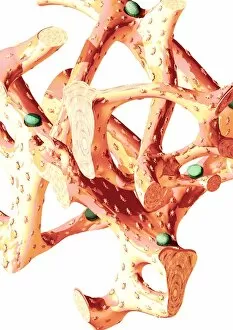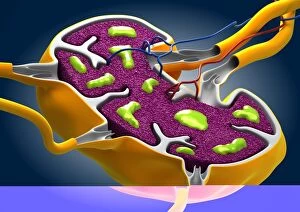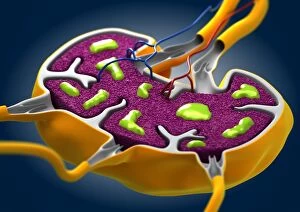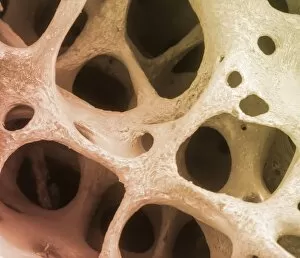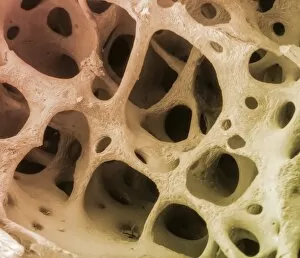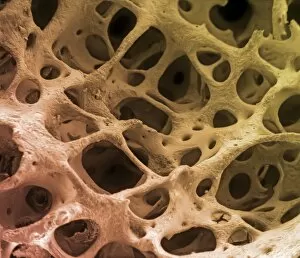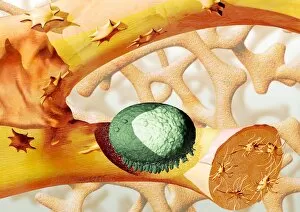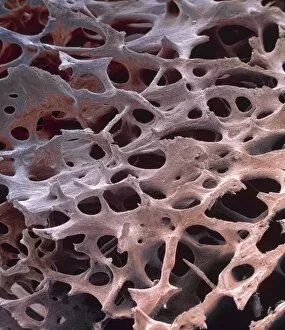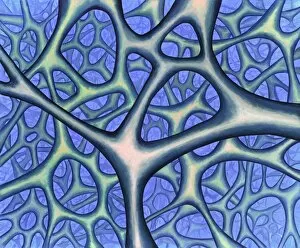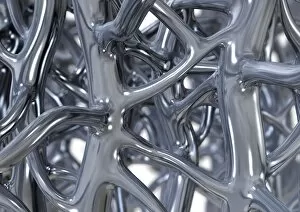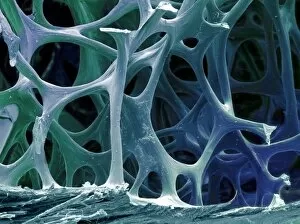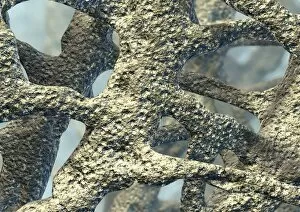Trabecula Collection
Trabecula: A Fascinating Network within Our Bones Trabecula, also known as spongy bone, is a captivating feature found within our skeletal system
For sale as Licensed Images
Choose your image, Select your licence and Download the media
Trabecula: A Fascinating Network within Our Bones Trabecula, also known as spongy bone, is a captivating feature found within our skeletal system. This intricate network of thin bony plates forms the inner layer of bones and plays a crucial role in their strength and flexibility. When observed under a light micrograph or through an illustration of the lymphatic system, trabeculae reveal their delicate structure. They resemble tiny branches or webs that interconnect to create a three-dimensional lattice-like framework. This unique arrangement provides support while allowing for the passage of blood vessels and nerves. Through artwork such as C016 / 7504 or C016 / 7545, we can appreciate the complexity of trabecular bone tissue at a closer level. Scanning electron microscopy (SEM) images like C013 / 4768, C013 / 4767, and C013 / 4766 offer even more detailed views, showcasing the fine intricacies present within this remarkable tissue. Not only do trabeculae contribute to bone strength but they also play a vital role in maintaining overall bone health. Bone resorption is one process where these structures are involved; it refers to the removal of old or damaged bone tissue by specialized cells called osteoclasts. The significance of trabeculae becomes evident when examining SEM images depicting spongy bone itself. These images provide us with an up-close look at its porous nature which allows for nutrient exchange between cells and contributes to overall bone density. Trabeculae represent an essential component within our bones' architecture. Their presence ensures both structural integrity and functionality throughout our bodies. So next time you marvel at your own skeleton's strength, remember that beneath its surface lies this fascinating network – trabecula – working tirelessly to keep you upright and moving.

